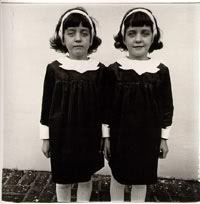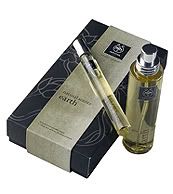Back in the 1970s and 1980s the scent of "groomed female" involved some floral aldehydic fragrance with the powerful blanched aspect of something termed White Linen (and we will revert to that) or First by Van Cleef & Arpels (or even Chanel No.5 for the purists), while still topping everything with the garland of sweet ladylike flowers. It probably involved matching ensembles, genuine supple kid skin leather goods and a 18K gold trinity ring by Cartier.
Our Millenial rotation has dispensed with the niceties and the romantic semiotics of flowers (especially since the metrosexual male partook in female ritual) and appreciates the "clean" "dry" feel minus the glamour and the hard cash. Enter the iris and white musk brigade that has been hammering down our collective nose door for a full on decade as the new code for "groomed".
 |
| via Korres Instagram |
The "cotton" mention is thus explained; the former hot iron on a starched linen shirt coming from aldehydes is now smothered into the downy soft fabric softener feel of irones on freshly laundered cotton sheets (irones form the main constituent in the scent of iris/orris). You can casually stroll any super-market aisle and pick up any product in the body products range or even the laundry detergents/fabric softeners; "cotton" is code for lots of irones and white musks. Case in point? Carrefour's Cotton shower gel, for one.
Infusion d'Iris doesn't smell particularly iris-y. truth be told. That is, it's not the starchy pasta-and-sourdough feel one gets from orris, the dried rhizome "resinous" extraction coming after macerating the roots, even though the perfume's whole marketing standpoint stresses that technique ("infusion" etc. though if you notice, in the "list" of "ingredients" on the packaging iris/orris isn't mentioned). It's a powerfully woody resinous "clean" smelling entity with formidable attributes that do not proclaim their presence. Benzoin, cedar notes and a hint of incense resin give warmth-coolness contrasts and copious tenacity and I suspect musk does too. This is also what I smell from the Korres Pure Cotton fragrance and the scratchy (but in a good way) lily of the valley aromachemical that signifies "I feel pretty, oh so pretty".
Beyond perfumery tropes, nevertheless, there is a very practical, tangible reason why Perfume Shrine's smell-alike perfumes articles, Twin Peaks, are so popular and this post is one such case. The full effect of the well-established best-seller by Prada comes at the fraction of the price in the newer incarnation by Korres! In fact Korres is probably playing on one of their older eaux de toilette, Iris Lily of the Valley Cotton.
If you have been following our blog for years, you surely recall our dinosaur-worthy article of how much perfume actually costs. The internet has since erupted on similar breakdowns of cost vs. retail price, but beyond the pure logistics, any dedicated fan will tell you you're paying not for the raw materials but for the expertise, the know how, the tradition, the beautiful aesthetics...in the end for the sheer experience. (And that's why if you haven't read The Aesthetic Principle you really should). Price is irrelevant if you truly love what you get.
 |
| from the Wallpaper "Clean Slate" editorial featuring Korres products, via Korres Instagram |
And yet, how do you explain two perfumes that are so close in scent that opting for one when having your eyes closed wouldn't produce a micro-grimace (lips falling down on one side, eyes rolling up) of distrustful apprehension? Of course lots of other brands and companies have cottoned on (can't help the pun) to the success of the Prada Infusion d'Iris, not least Prada itself (mainly with their Infusion d'Homme). Chanel for one seems to have revitalized the No.19 perfume stable with Chanel No.19 Poudre, a scent which smells more like something from Prada (a soap devised by Prada) than traditional Chanel (a soap referencing Chanel)...and feel free to call me reductionist if you like, since I'm sorta sacrilegiously "reducing" both to soap. (Though soap is hard business to get right). And I'm coming round to the beginning of my parsing treatise; it's probably Dove and their classic soap scent which has inspired this whole genre. Something fluffy, soft, powdery and full of irones, lily of the valley, orange flower and white musks.
Fragrantica categorizes Korres Pure Cotton (part of the newly launched Eau de Cologne range) into the "aromatic spicy" fragrances and gives (the official) notes of mandarin orange (on top), iris (in the heart) and amber (in the base). It is an eau de cologne edition in a biggish bottle in the familiar elegant Korres aesthetics with a matte black rubber spraying mechanism. It smells and performs exactly the same as Prada's original Infusion d'Iris eau de parfum. Perfumephiles on a budget, rejoice!
.jpg)





.jpg)














.jpg)